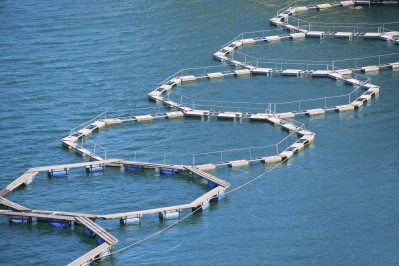Special Edition: IPPE Reports
National Renderers Association talks industry trends, feed ingredient development
We caught up with Jessica Meisinger, director of communication and education at the National Renderers Association, at the International Production and Processing Expo (IPPE) to hear more about the work the group is doing, the role their efforts play in industry sustainability and their upcoming research projects.
The association has been increasing its outreach and transparency efforts in recent years to talk about the role for rendered products in sustainability efforts and provide more information about what the industry does and could mean for related areas like feed production, she said. “The rendering association is about sustainability – that is our messaging,” she added.
“It’s exciting to remind people that we exist,” she said. An additional part of the outreach effort is to remind members of related industries, like feed production, of the role rendering plays in sustainable production, she added.
The association, along with its sister organization the Fats and Proteins Research Foundation (FPRF), currently supports ongoing research looking at new or expanded uses of rendered products, said Meisinger. Some of the projects include using rendered ingredients in heavy swine diets and establishing a new source of feed grade omega-3 fatty acids.
“We think we can make omega-3 fatty acids out of our fats,” she said. “Omega-3s are very high value and it would be nice to have a feed grade source.”
Sustainability and outreach
The rendering industry is a part of the “circular economy,” said Meisinger. However, it has not always been a role that others were aware of, and the industry continues to face some pushback in relation to certain products it generates.
“A renderer will never use the word waste, it’s something that could be wasted, but we do not make a waste-product,” she said. But, the phrase by-products may make some people uncomfortable because there have been campaigns based on that wording, she added.
“It’s scare tactics – by-products are very healthy and animals like them, they’re nutritionally dense, and they’re sustainable,” she said. It would be hard to hit a carbon footprint goal without using a rendered feed ingredient, she added.
However, the sustainability of rendered ingredients may provide a selling feature for feeds, she said. “We have a sustainable feed, it’s carbon positive, and we take more carbon out of the environment than we put in – a story like that, if you’re a small feed manufacture you could sell that,” she added.
“There may need to be a rebranding on some of these things, not by renaming them but by saying, this is why we use it and it’s really good – we’re not using it to try and trick you,” said Meisinger.
For the feed industry, knowledge of rendered products may offer a way to distinguish product lines, said Meisinger. “Pet food is getting increasingly segmented into specialty products, and I wouldn’t be surprised to see feed start to do that in some way,” she added.
The use of specified products could provide products that are more precise, that highlight the use of a specific meat or bone meal, or that exclude certain elements, she said.
“I see a lot of opportunity in all of our products, they have a good nutrient profile, animals like them and they taste good,” she said. “There’s so much opportunity because it’s a product that animals like they like eating it, and you don’t have to trick them into eating it by using palatinates.
Research, development and feed ingredients
As part of its focus rendered products and use of by-products, FPRF funds a series of research projects and it started the Animal Co-Products Research and Education Center at Clemson University.
“Some of these projects are so fascinating and so cutting edge in a way that nobody would think that the renderers would do them,” said Meisinger. Projects supported by the organizations face a series of review and are evaluated by association members for real-world applicability, she added.
Current efforts include work to streamline and improve a bioprocess scale-up of omega-3 production using rendered fat.
Another feed-ingredient focused project is examining alternative production of astaxanthin, said Meisinger. When eaten by fish, the compound is what makes salmon turn pink.
“It’s incredibly high-value and incredibly expensive,” she said. “They have to feed it or pink things don’t become pink, and they think they can make it out of protein meal – those kinds of things are really exciting to talk about.”
Additionally, a project through the University of Kentucky is evaluating the use of different fat sources and vitamin E in swine diets.
“The pigs of today aren’t the pigs of yesterday,” said Meisinger. “If you have a project that is 20-years-old, it’s a different pig, it’s a different chicken, it’s a different turkey, so you have to redo these projects otherwise it’s not valid.”
“Pigs are heavier now,” she added. “This project is investigating the benefits of different fat sources on these heavyweight pigs and vitamin E supplementation – is it really worth it on these heavyweight pigs that no one has ever researched?”















